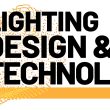Decarbonization is a pressing global issue, and the lighting and building industry is at the forefront of this challenge. As governments and companies around the world set ambitious targets to reduce greenhouse gas emissions, the industry is being forced to adapt and innovate.
The good news is that decarbonization presents significant economic opportunities for the lighting and building industry. By embracing new technologies and business models, companies can not only reduce their environmental impact but also increase their competitiveness and profitability.
One of the key areas of focus is the development of sustainable lighting solutions. LED lighting, for example, is a highly energy-efficient technology that can significantly reduce energy consumption and carbon emissions.
However, the transition to sustainable lighting solutions is not without its challenges. The industry faces significant barriers to adoption, including high upfront costs, limited infrastructure, and a lack of standardization.
Another area of focus is the development of smart buildings. By integrating advanced technologies such as sensors, automation, and data analytics, buildings can be made more efficient, sustainable, and responsive to occupant needs.
Despite these challenges, the industry is making significant progress. Companies are investing heavily in research and development, and new technologies and business models are emerging.
For example, some companies are developing innovative lighting solutions that use artificial intelligence and machine learning to optimize energy consumption and reduce waste.
Others are creating new business models that focus on energy efficiency and sustainability, rather than just selling products.
As the industry continues to evolve, it is clear that decarbonization presents significant economic opportunities for the lighting and building industry. By embracing new technologies and business models, companies can not only reduce their environmental impact but also increase their competitiveness and profitability.
In conclusion, the lighting and building industry is at a critical juncture. The transition to a low-carbon economy presents significant challenges, but also significant opportunities. By embracing innovation and sustainability, companies can not only reduce their environmental impact but also increase their competitiveness and profitability.









